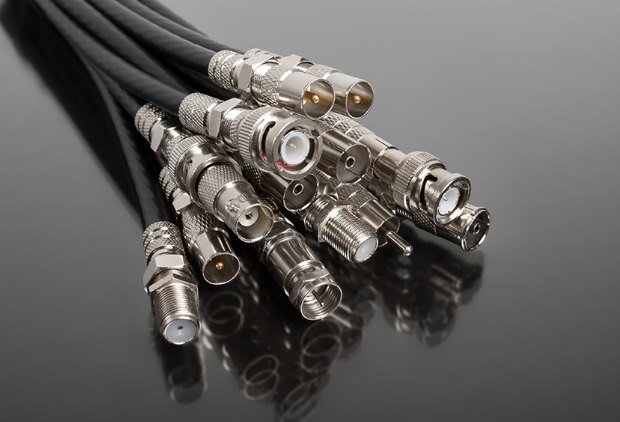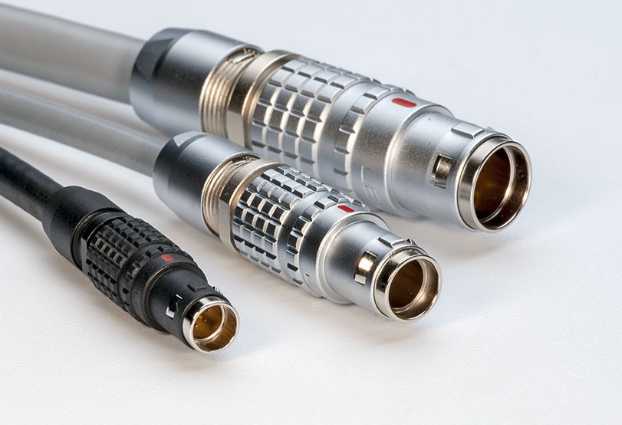USB, HDMI, and RJ45 are common cable connectors for data transfer, audio-video output, and networking with speeds up to 10 Gbps.
USB (Universal Serial Bus) Connectors
One of the most common types of connectors during the digital era, USB connectors are used to connect a wide variety of devices from peripherals, such as keyboards, mice, and controllers to printers to mobile devices to charge or computers to transfer data and flash drives to store it. Such a wide range of applications, as well as the universal acceptance and use of the USB standards, makes it one of the most important pieces of equipment in any professional and domestic environment.
USB Standards and Their Evolution
The USB standard used has gone through several significant updates since its introduction; for example, USB 1.0 was mandated to have a data transfer rate of 12 Mbps. The soon follow USB 2.0 doubled the speed for an acceptable maximum speed for Hi-Speed USB of 480 Mbps. USB 3.0, however, which was first implemented in 2008, was a significant improvement over the previous versions – the USB Implementers Forum considered the maximum speed for SuperSpeed USB to be 5 Gbps . Under the next major specification labeled USB 3.1, the rate was doubled to 10 Gbps, but the next version released under USB 3.2 reached transfer rates of 20 Gbps. The latest version of USB connectors, USB-C, does not only improve on data transfer rates but also allows for power up to 100W to move through the same cable used to transfer data. For example, a laptop can be charged with the same cord as the one used to connect it to the power source.
Practical Application in Everyday Life
USB connectors greatly simplify people’s lives in many different ways. For instance, using only a single USB cord, one can connect their phone to a computer to charge it, connect a hard drive to back up data, and connect a printer to print off important documents right away. Similarly, using USB allows people to avoid or reduce the need to use multiple different cords to charge different devices, uncluttering their work or living space.
Constraints on Design
Another important limiting factor on design is durability. However, materials and fabrication play a major role, with most cables being made out of standard PVC cables; a nylon-braided sheath is more durable and longer-lasting, with some cables guaranteeing up to 5,000 pulls thanks to the cable’s construction, and others are tested at 20,000 pushes or more.

HDMI (High-Definition Multimedia Interface) Connectors
HDMI connectors are one of the most critical components of modern audiovisual technology. They are perfectly standard and users likely integrate them into their everyday life without even noticing. The yellow HDMI connectors are used to run video and graphics together with sounds to a television screen or a computer monitor.
The HDMI standard has evolved from version 1.0 to HDMI 2.1. Since its introduction in December 2002, HDMI 1.0, the standard has gained widespread use in almost all electronic devices that have speakers and video capabilities. The speed at which the standard has developed remained steady, although it experienced considerable improvements in terms of data bandwidth.
The original HDMI 1.0 provided a bandwidth of 4.95 Gbps, which was sufficient for digital high-definition video resolutions . The latest home entertainment systems and high-definition video and animation require higher bandwidths. In response to these changes, the HDMI 2.1 standard was introduced with a bandwidth of 48 Gbps.
Both professional and home use of HDMI become exceedingly popular with developments in the field of high-definition audio and video. Home entertainment can greatly benefit from technology because HDMI can be used to connect various home devices, including laptops, monitors and video projectors. The use of HDMI technology for professional purposes, such as preparing presentations or holding conferences, is also widespread because it allows to connec lectronic devices with the main video and audio equipment in a simple and efficient manner.
The above-mentioned reasons illustrate that HDMI connectors are one of the most important components of modern audiovisual technology. The quality and durability are of utmost concern. For instance, the picture quality might be substantially modified due to incorrect transmission of electronic signals or damage to the metal. cognitech.net is a website that offers mid-range hardware, including several HDMI 2.1 cables between 10$ and 20$ and gold-plated connectors for 10$-.

RJ45 (Registered Jack 45) Connectors
RJ45 connectors are one of the once again auxiliary components of network communication. Their primary use is in use in Ethernet networking, which connects computers and other devices using networking equipment and cabling. Not to be confused with an RJ11 connector, RJ45 connectors consist of an 8-pin connection that can be used for a more stable connection than wireless networks, typically more secure and faster. These can be seen in personal computers or laptops when cabling an ethernet wire directly to the device.
Technical Details and Developments
RJ45 connectors use 8 pins to transmit data and can carry said data in speeds of up to 10 gigabytes over an Ethernet connection, depending on the cable category. For one, Cat5e cables can carry up to 1 gigabyte per second before the Cat6 10 gigabytes. Cat6a and Cat 7 cables can both carry speeds of 10 gigs along with even more significant bandwidth – 500 MHz and above. Other distinguishing features among these higher-category cables include increased durability and more complicated design of some of the wiring.
Applications in Various Environments
They are mostly used in office areas to connect workstations, printers, and especially servers to a central computer, so they can share files and access company databases or the media. Interior and residential use is also significant for the interconnection of an array of devices, such as stationary smart devices, personal computers, and even laptops. In an industrial context, RJ45 connectors have proved most useful, as machines and automated control units often require a more stable network connection. The specific needs of the environment make for an important consideration as machines and wires of this kind use more durable metal cabling so the contacts do not vibrate or short-circuit.
Cost and Performance Considerations
RJ45 cables found on the market are relatively affordable. However, the longer or higher category cables that one might require for various purposes will cost more than the standard ones. For example, a standard 1m CAT6 RJ45 cable might cost around $3-5, while a similar length and shielded cable might cost up to $10. The other significant cost tied to the use of RJ45 cables would mostly be magnetic shielding. The best application of RJ45 connectors would typically be home cabling work, as these provide a more secure and stable connection than wireless Internet systems which are also likely to be affected by interruptions in the form of walls or different electronic devices.






